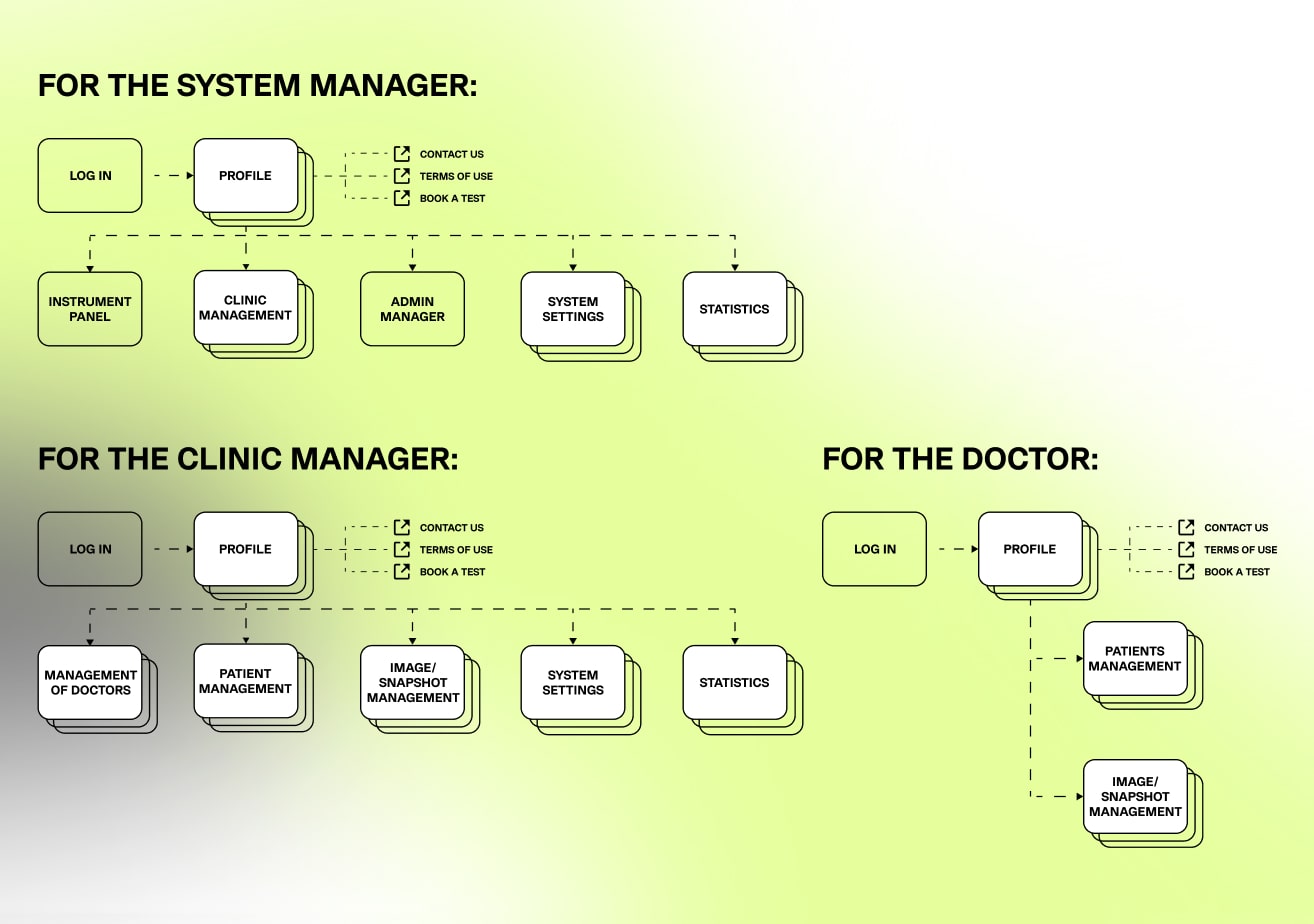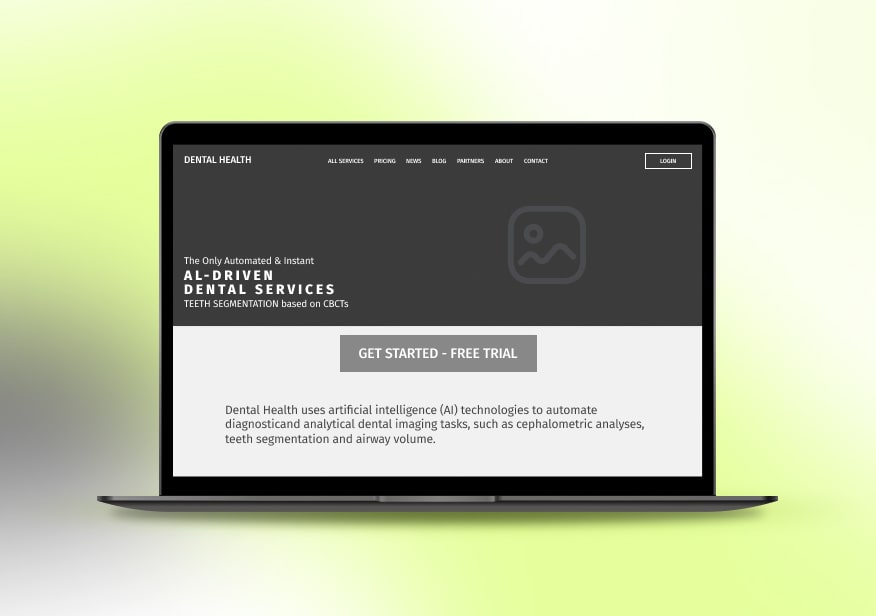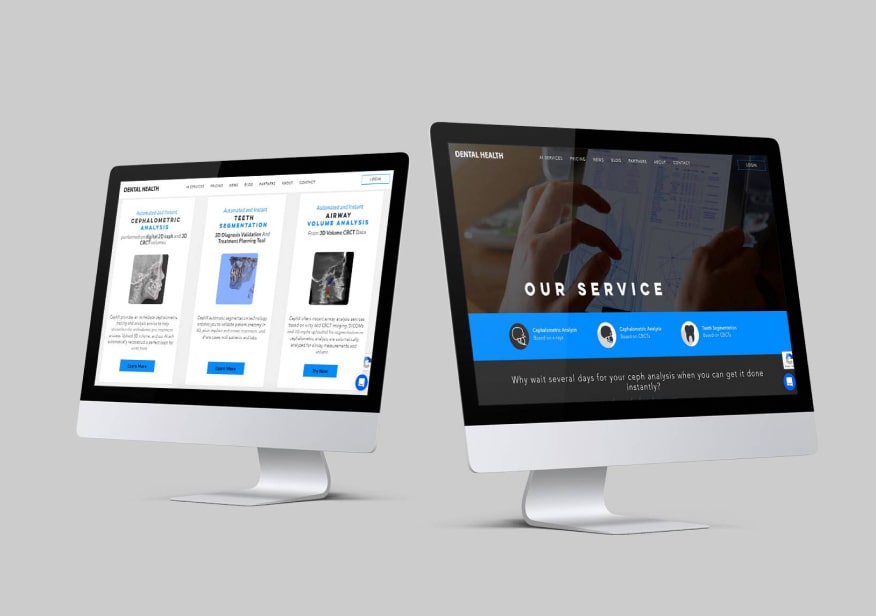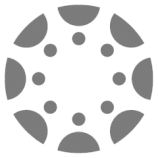А company with 20 years of experience in the dental field, has significantly improved its platform by working with Compotools. Our team has implemented artificial intelligence and machine learning, optimised X-ray processing, and improved the platform’s language packs.
Dental Health is a longstanding player in the healthcare industry in the Middle Eastern region. For over twenty years, it has specialised in providing solutions for dental and orthodontic practitioners. As a small business, it has established itself as a reliable partner for dental professionals, offering tools and technologies to streamline their workflows and enhance patient care.
Its technology enables practitioners to obtain accurate and professional cephalometric analyses within seconds, enhancing diagnostic precision and significantly improving efficiency, productivity, and patient throughput.
Despite their expertise and experience, Dental Health faced several challenges that hindered their growth and efficiency. Their existing monolithic application architecture with complex interdependencies led to inefficiencies in development processes, resulting in delays and decreased team productivity. Additionally, their legacy technology and outdated visual design limited their business potential, making it difficult to stay competitive in an evolving market.
Compotools offered Dental Health a comprehensive solution that included a complete platform upgrade and the introduction of new features to increase efficiency, optimise image processing and improve the user experience.
Working with us has allowed Dental Health to improve its platform, expand its capabilities, and reach new heights in dentistry. Our engineers have improved diagnostic accuracy, and personalised treatment plans with artificial intelligence have led to better patient outcomes. The platform’s user-friendly interface has accelerated the receipt of radiography results.
Computools successfully addressed the client’s challenges by modernising the technological infrastructure, enhancing functionality and improving the overall design of the platform. The transformation included implementing features such as efficient X-ray image processing, report generation analytics tools, and additional options to streamline orthodontic support.
Computools brought a skilled team of Java developers and experts in various technologies to the table, ensuring that the project’s goals were met and exceeded.
The client’s main task was to develop a platform for orthodontists’ support. This platform would help process analyses, prepare analytics reports, and install reference points on the X-ray image to plan the necessary procedure (brace, for instance). After analysing the client’s goals, we offered Dental Health an outstaff team of engineers.
The selection of Computools was not solely based on technical prowess. It also reflected the compatibility of work methodologies and the commitment to effective communication. The Computools team, including Business Analysts, Project Managers, and Quality Assurance Engineers, demonstrated a clear understanding of the client’s goals and an agile approach to project management.
Our engineers developed a specification based on the client’s tasks to finish the project and complete the client’s tasks on time. Thanks to close collaboration with the client’s Project Coordinator, we were able to pay close attention to all important functional and non-functional requirements.
We identified inefficiencies in the development process through a technical audit, including delays and decreased team productivity, due to a monolithic application architecture with complex interdependencies. To address these issues and improve efficiency, we proposed a migration to a microservices-based architecture. We configured a continuous delivery procedure to streamline deployment and maintenance processes, enabling faster delivery of new features and updates. This approach improved agility and responsiveness to changing user requirements.
For the project, we chose designers who were already experienced in the healthcare domain and had a good understanding of the target audience:

Crafting detailed profiles of target users for precise platform alignment.

Visualising the hierarchical structure of the website's pages and content.

Creating skeletal outlines to illustrate layout and functionality before design.

Designing the interactive elements for a seamless and intuitive user experience.
Java
Java's versatility and platform independence make it suitable for building scalable and robust enterprise applications. The choice aligns with the need for a backend language that can handle the complexities of healthcare technology and provide a stable foundation for the platform.
JPA (Java Persistence Annotation)
JPA simplifies the interaction between Java objects and relational databases, ensuring efficient data management. Using JPA aligns with the need for a standardised solution to handle the platform's database interactions seamlessly.
Servlets
Servlets extend the capabilities of web servers, making them suitable for handling diverse requests. This aligns with the project's requirement for a technology that can enhance the functionality of the web server hosting the healthcare technology platform.
jQuery
jQuery simplifies complex JavaScript tasks, making handling AJAX calls and DOM manipulation easier. This choice aligns with the need for efficient front-end development, enhancing the user interface and overall user experience.

jQure and Canvas
The combination of jQure (assuming jQuery) and Canvas suggests focusing on dynamic, visually rich front-end elements. As an HTML5 element, Canvas provides a low-level procedural model for rendering graphics, contributing to creating interactive and visually appealing features.

AWS S3
AWS S3 offers reliable and scalable cloud storage solutions. Its ease of integration and robust features make it an ideal choice for handling the platform's storage needs, ensuring the secure archiving of cephalometric X-ray analyses and patient records.
For this project, Kanban was chosen as the appropriate methodology. Kanban is a method for managing the creation of products with an emphasis on continual delivery while not overburdening the development team. Kanban is based on three main principles: visualise workflow, limit the amount of work in progress and enhance flow (when something is finished, the next highest thing from the backlog is pulled into play). Kanban promotes continuous collaboration and encourages active learning and improvement by defining the best possible team workflow.


“Computools was selected through an RFP process. They were shortlisted and selected from between 5 other suppliers. Computools has worked thoroughly and timely to solve all security issues and launch as agreed. Their expertise is impressive.”